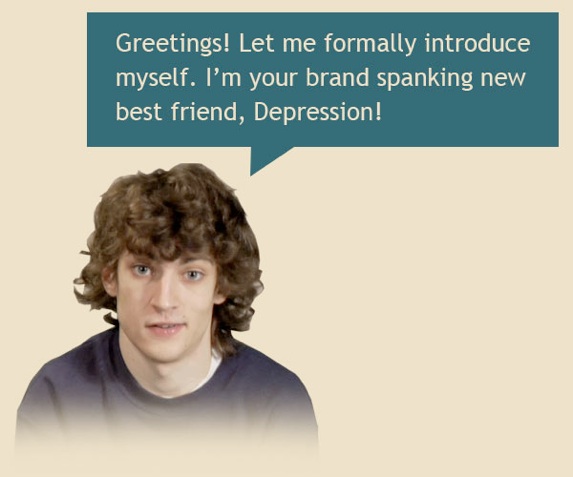Latest Public Service Radio Minute
Loss of EmploymentLoss of Employment, MP3, 1.3MB
Listen to or download all our PSAsSupport Our Work
Please donate so we can continue our work to reduce the stigma of psychiatric illness, encourage research, and support educational activities for behavioral health professionals and the public. Ways you can donate and help are on our Support and Donations page. Thank you!
More InfoLatest News Around the Web
Hospitalized Patients Who Experience Delirium May Have Elevated Risk Of Long-Term Cognitive Decline, Meta-Analysis Suggests
MedPage Today (7/13, George) reports, “Delirium was linked to long-term cognitive decline in both” hospitalized “surgical and nonsurgical patients,” investigators concluded. The 23-study meta-analysis revealed that “patients who experienced an episode of delirium were more than twice as likely to show long-term cognitive decline than patients without delirium.” The findings were published online July 13 in JAMA Neurology.
Psychiatric News (7/13) reports, “The circumstances of the delirium (following anesthesia, trauma, infection, and so on) did not affect the odds of future cognitive decline,” thereby suggesting that “the underlying mechanisms of delirium may be similar and possibly associated with inflammatory processes common to both surgical and nonsurgical contexts, the investigators noted.”
Related Links:
— MedPage Today (requires login and subscription)
Experts Urge Caution On Treating Patients With Bipolar Disorder With Antidepressants, Particularly As Monotherapy
Medscape (7/13, Davenport, Subscription Publication) reports, “Although patients with bipolar disorder commonly experience depressive symptoms, clinicians should be very cautious about treating them with antidepressants, especially as monotherapy, experts asserted in a recent debate on the topic” that took place during the virtual European Psychiatric Association 2020 Congress. During the Congress, “psychiatric experts said that clinicians should also screen patients for mixed symptoms that are better treated with mood stabilizers.” In addition, “these same experts…raised concerns over long-term antidepressant use, recommending continued use only in patients who relapse after stopping antidepressants.”
Related Links:
— “Caution Urged for Antidepressant Use in Bipolar Depression, “Liam Davenport, Medscape, July 13, 2020
Women Taking Antidepressants More Likely To Develop T2D During Six Years Of Follow-Up Than Nonusers, Study Indicates
Healio (7/10, Schaffer) reported, “A cohort of French women currently taking any antidepressant medication were more likely to develop type 2 diabetes [T2D] during six years of follow-up compared with nonusers, independent of severe depressive symptoms,” investigators found after analyzing “data from 63,999 women without type 2 diabetes at baseline.” The findings were published online June 16 in the journal Diabetic Medicine.
Related Links:
— “Antidepressants elevate risk for type 2 diabetes, “Regina Schaffer, Healio, July 10, 2020
Success Of Safe Injection Site Prompts Calls To Consider More Alternative Approaches To Addiction
The Washington Post (7/10, Kornfield, Wan) reports the success of a safe injection site in the US “has prompted calls for policymakers to start considering solutions that focus on reducing harm and deaths rather than traditional law enforcement and punishment.” Experts are saying “they fear that if the country doesn’t intervene, this year will bring a wave of fatalities driven by pandemic-related isolation, unemployment and changes to the drug supply.” The piece mentions that “Nora Volkow, director of the National Institute on Drug Abuse…said it is also important to understand the effect the pandemic is having on those who use drugs.”
Related Links:
— “America needs to reduce soaring overdoses. A secret supervised injection site may show us how., “Meryl Kornfield and William Wan, The Washington Post, July 10, 2020
Stress caused by COVID-19 may have triggered increase in stress cardiomyopathy cases, research suggests
Newsweek (7/9, Gander) reports that research suggests “the stress of living through the COVID-19 pandemic may be associated with a rise in” stress cardiomyopathy.
NBC News (7/9, Sandoval) reports that investigators “looked at the medical records of 1,914 patients at two hospitals in the Cleveland Clinic health system from five eight-week periods, four of which occurred before the pandemic and the other since then.” Prior to “the pandemic, there were, on average, five to 12 cases in an eight-week period, but in the cohort observed during the pandemic, the number rose to 20.” The researchwas published in JAMA Open Network.
Related Links:
— “Stress Caused by COVID-19 May Have Triggered Rise in Broken Heart Syndrome, “Kashmira Gander, Newsweek, July 9, 2020
Foundation News
Nothing Found
It seems we can’t find what you’re looking for. Perhaps searching can help.

